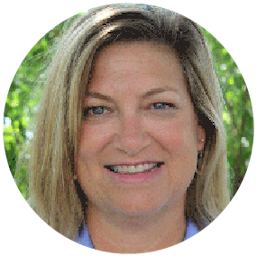How Can We Improve Emergency Response? Work with Older People
Apr 28, 2022
Story
This summer we saw disaster after disaster hit the Caribbean, the U.S., and Mexico. We followed the news as category 4-5 hurricanes devastated entire communities and watched the death toll from a 7.1-magnitude earthquake rise. As CNN scrolled across our screens, the images that spoke to our hearts and spurred us to give to charities on the ground were the photos of the most vulnerable.
It's why a recent Twitter photo showing older Americans trapped in a flooded nursing home during Hurricane Harvey went viral, prompting swift emergency aid.
Older people are one of the most vulnerable groups in natural disasters. Two earliest-reported fatalities from the California wildfires were an older couple, aged 100 and 98, and authorities expect that the deaths of older people, who often cannot move as quickly as others, will only increase as the flames continue to ravage communities.
The vulnerability of older people in natural disasters is not only a reality here in the U.S. but abroad as well. 56% of those who perished during the 2011 tsunami in Japan were aged 65 and over.
This stands in stark contrast to the proportion of emergency funding that is allocated towards the needs of older people: less than 1 percent.
As the CEO of the U.S. office of HelpAge, a global non-profit dedicated to improving the lives of older people in low and middle-income countries, my eyes have been opened to the ways in which older people are so often left out of the planning process in disaster risk reduction, the rescues during natural disasters, and even the subsequent media coverage.
The image of the trapped Houston nursing home residents caught the public's attention not only because the scene was horrifying, but also because older people are so rarely reported on in disasters. For me, the photo was a reminder that older people, while often the ones in greatest need of help, are often the first to be forgotten.
What can be done about this? For HelpAge, change begins with inclusion. Working during and in the aftermath of disasters, we make sure the needs and experiences of older people are factored into emergency response plans.
In addition to providing immediate assistance such as food, water and medicine to those affected by Hurricanes Irma and Maria, HelpAge is developing systems that improve emergency preparedness and response for future natural disasters.
Our coordination of the Caribbean Emergency Preparedness Network will foster engagement between local organizations and older people to facilitate greater resilience and preparedness.
This is not merely a feel-good exercise. The insight of older people in past needs assessments has improved the speed and reach of food distribution, enabled shelters and latrines to be accessible to those with disabilities; and jumpstarted income-generating projects so local people can get back on their feet faster.
The United Nations' Sendai Framework, which calls for disaster risk reduction planning and best practices, guides governments and donor agencies on how to pipeline resources to activities that provide protections to vulnerable groups.
We have taken a hard look at the Sendai Framework and strive to ensure older people are included in the following areas:
- Relief distributions: We provide older people with essential relief items in the immediate aftermath of a disaster, such as hygiene kits, shelter materials and supplementary food.
- Healthcare: We provide older people with appropriate healthcare through specialist staff in existing health facilities, training health staff, running mobile clinics and distributing medication and equipment, such as mobility aids and eyeglasses.
- Livelihood support: We help older people develop secure incomes by supporting work opportunities, as well as access to micro-credit and cash transfers.
- Protection: We identify the most vulnerable in emergencies, facilitate their access to essential assistance and care, and advocate for their rights.
- Disaster risk reduction: Where possible, we incorporate disaster risk reduction (DRR) measures to reinforce crisis-affected communities' resilience to future disasters and to protect and strengthen their existing capacities to meet their own needs.
As thousands of Rohynga flee their homes to bordering Bangladesh, HelpAge is working with its partners to help 50,000 older people and their families by providing water and much-needed sanitation services to prevent the spread of communicable diseases. Our focus on older people also means that mobile health stations will be equipped to care for those with chronic health conditions.
On International Day of Disaster Risk Reduction, I hope you'll remember that to effectively mitigate the risks of disasters, older people and their specific needs must be included in plans for emergency preparedness and response.




